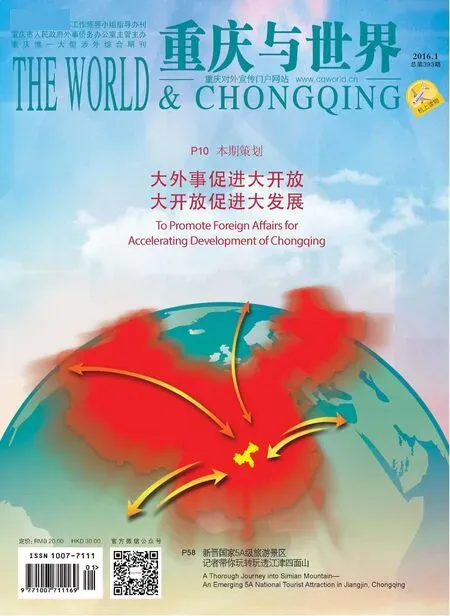重庆私藏 重庆私家博物馆地图
2016-09-01邹应秋图片资料提供
□ 文/邹应秋 图片资料提供/何 洋
重庆私藏 重庆私家博物馆地图
□ 文/邹应秋 图片资料提供/何洋
火锅、美女、夜景、棒棒、梯坎、江湖、雾都……很难想象一座城市可以被这么多词汇同时形容,但事实上这座城市的名片远不止这些,譬如重庆的博物馆,多数人只知晓重庆的三峡博物馆,殊不知还有许多散落在重庆角落里的“私家博物馆”。这里介绍的几家私人博物馆,所藏之物不是纪念币、邮票、古玩等大众化的藏品,而是偏小众化的火锅、古灯、匾额,甚至名人遗迹,它们或罕见古老,或沉寂有声,藏于民间,却依旧熠熠生辉。
民间智造——火锅博物馆
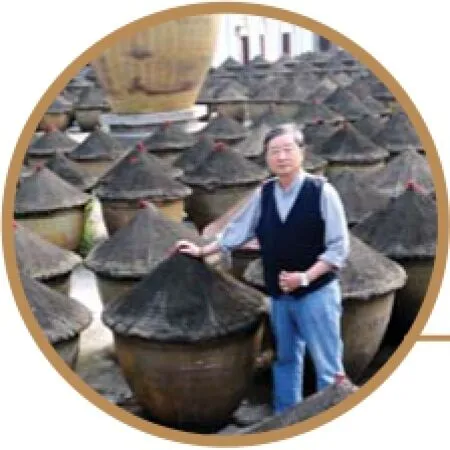
很多人都不知道,在重庆,有一间火锅博物馆,有“天下第一大桌”、“天下第一大缸”的称号,这些决不是一个浮夸的噱头。
一切都要从聂老说起。聂贛如出生在收藏世家,其先祖曾在清朝任职,到其父时收藏的古玩字画足足装了一间屋。二十多年前,在清理祖传收藏品时,三口风格各异的铜、锡、瓷火锅,引起了聂贛如极大的兴趣,萌发了收藏火锅、创建火锅博物馆的念头。
在上千平方米的展厅里,火锅器皿及相关实物藏品足有千余件。从西周时期奴隶社会人们享用的单人火锅,到乾隆皇帝举行千叟宴的纯银火锅,一直延续至今,与火锅相关的历代器皿就有600多件。按材质区分,收藏有陶、瓷、石、银、锡、铜(青铜、白铜、紫铜、黄铜)、铝、铁、不锈钢、紫砂、搪瓷等种类的火锅;它们使用的燃料又分为木炭、蜡烛、酒精、气体和电能,最让人称奇的是还有用动植物油做燃料的火锅。另外,堪称古董精品的有西周青铜方鼎、汉代龙把铁鼎、唐三彩火锅、宋代瓜瓣兽耳铸铜火锅、明代四寿字铸铁火锅、清朝乾隆款蓝釉龙纹火锅以及乾隆皇帝举行千叟宴的纯银火锅等。藏馆里的收藏门类齐全、品种丰富,在国内外绝无仅有。
除了收藏,聂贛如还喜欢打造“第一”。位于三耳集团大门中心的天下第一火锅大桌便是创意设计敢为人先的作品之一。为了聚集热爱火锅文化的朋友,聂贛如在生产基地建造了这一大桌。大桌四周由6根雕刻有重庆火锅文化楹联的大柱环绕,给就餐的宾客带来美花美色、美滋美味,倍感“重庆火锅誉世界,巴渝厨艺写春秋”之惬意。
聂老说:“我不是一个收藏家,收藏家只会把淘到的宝贝藏在自己家里,等着日后升值再转手卖出。而博物馆的藏品是只出不进,它的价值是永恒的。我从不做慈善捐款的事,我建博物馆就是最好的慈善事业,博物馆是留给社会,留给后代子孙的。”
建筑之眼——匾额博物馆
“瀚匾园”是重庆匾额博物馆的名字,这里展示着3000多块古代匾额,如果不是身临其境,你很难想象在重庆这个地方还有这样的景象。它位于重庆渝中区李子坝牛滴路加气站旁,背靠大山,面朝嘉陵江。
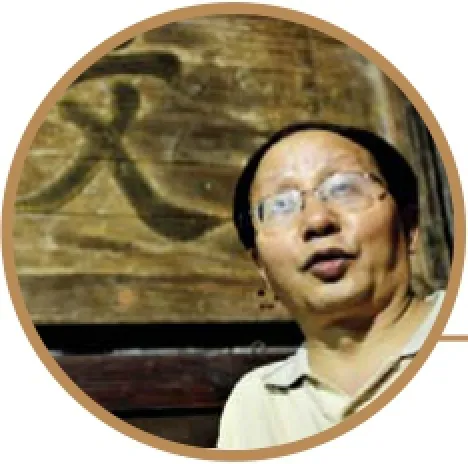
这些匾额都是一个叫刘光瑞的人,同他的父亲刘少林花了近20年的时间点滴收藏而来。他不是考古家,也不是文物贩子,而是一名治病救人的医生。用他业余的时间不光踏遍了巴山蜀水,还远及内蒙古、福建、广东、云南……可谓踏破铁鞋,连自驾的车都坏过好几次。皇天不负有心人,也正是他的细心和执着,年复一年,积得了这批在全重庆乃至全中国都响当当的匾额。
这些匾中,有的简单朴素,除了题款什么都没有,有的密布雕花,有的满身都是蛀虫蛀的虫眼。有的匾刀砍斧戳、伤痕累累,是被用来做案板、办酒席所致;还有的匾被用来做门框、地板,甚至搁在猪圈里。其中最早的一块匾为明朝时期匾额,而最大的匾额长度超过了3米。
作为民族文化的一种标志,匾额过去在城市和乡村都非常普遍地被使用,由于历史的变迁以及其它因素,历史上的匾额属于首当其冲被损毁的文物,因为它是明挂的,所以目前在城市里很少看到老匾额。
刘光瑞说,匾博物馆入口处的石墩是从墓地里挖掘而来,照理说裸露在外不恰当,但他故意这么做,“我用自掘坟墓这样的形式来惊醒世人,如果对中国传统文化再不保护,甚至摒弃,那才是真正的自掘坟墓。”
在历史的长河中,曾留下过许多匾额,但都逐渐被损坏和销毁了。刘光瑞没要政府一分钱,投资1200万元创办“瀚匾园”,古建筑专家罗哲文先生、故宫博物院的文物专家杨伯达先生在观看300余块巴渝古匾时说:“重庆的文化和重庆的地方史,全在这些匾的内容里,是难得的文化传承,其价值极高。”而上海的新闻专家、韬奋奖获得者张攻非老先生看后题写道:看懂了是文化,读通了是历史。他感叹重庆的历史文化竟然如此精彩。
人生伴侣——古灯博物馆
在重庆,有一位叫吴世友的藏灯人,他利用数十年的时间,收藏了超过500盏灯。小小的灯台,给了他无尽的想象。他常常说,其实这些灯都是有灵性的,点亮灯芯,就像在与古人对话。
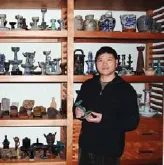
吴世友年轻时的志向是读美院当画家,命运却让他进了医学院,后来就成了一名拿手术刀的大夫。早年的美术基础让他有着比较好的艺术鉴赏力,特别是对中国民俗文化特别喜爱。

因为吴世友的职业是医生,常常会接触很多病人,而且很多病人来自偏远农村,他们为了感谢吴世友为他们治好病,得知吴世友喜欢藏灯,就会从偏远地方帮忙打听,这才使得吴世友的收藏途径有所扩宽,所以,很多散落民间的灯台被他找到。因为他的用心,在全国各地的旅行中,他“收获”颇多,家里的古灯也堆积得越来越多。
吴世友说,收藏灯讲一个“缘”字,有时候,一件好东西,“得来全不费功夫”。一次,他到荣昌去玩,一位朋友给他看了一盏“怪灯”,这盏灯看似头盔,造型怪异,却是一盏设计巧妙、功能完备的“巡城灯”,制作者通过精巧的设计使其具有防风防雨和防雾的功能。他见了喜欢得不得了,主人说你喜欢就拿去吧。经考证,这是一盏宋代的古灯。
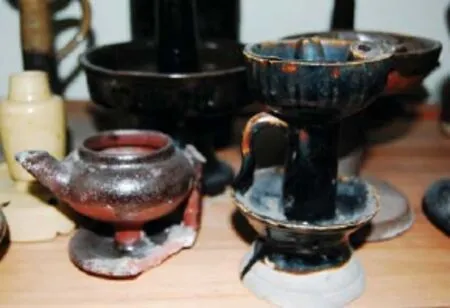
吴世友手里的藏品因“缘”而丰富起来:一盏汉代的灰陶灯,是在成都买另外几件东西时送的;两盏造型各异的竹灯台,是一位病人从大巴山带来给他的;一盏功能齐全的黄铜“吸蚊灯”,是他在北京学习时偶然购得……
20来年间吴世友已经有了各类古灯五百余盏,藏灯身价也随着古灯市场的活跃而上涨成百上千倍,但吴世友并没有出手。对于藏灯,仅仅是出于一种喜欢。吴世友说,“与灯结缘看似偶然,其实我对灯有着深厚的感情。小时候家里点油灯,插队时在农村是‘出门一把火,进门一盏灯’,青灯孤影下,读书复习考大学,可以说灯是我重要的人生伴侣。”
名人遗迹——飞虎队展览馆
在渝中区李子坝沿着嘉陵新路蜿蜒着向上走,路边一片苍翠欲滴,其中一栋青砖绿瓦的旧房子就是赫赫有名的“飞虎队展览馆”。

馆长代庆标是个非常和蔼可亲的人,因对飞虎队情有独钟,四处搜索与飞虎队有关的信息,索性就开了这个展览馆,这是全国屈指可数的飞虎队展览馆之一,里面存放着的不仅仅是飞虎队曾经用过且丢失的物件,还有中国人乃至美国人对当年中美联合抗日结下的友好情感。
代馆长研究飞虎队已长达10年的时间,能和他人分享他所了解的有关飞虎队的一切,他十分乐意。当初开展览馆纯属偶然,但久而久之竟成了一种责任,在他看来,能为重庆人保存这段十分珍贵的历史是件挺荣耀的事儿。
提到飞虎队,就不能不说创始人陈纳德,代馆长对这个美国人无比钦佩,“陈纳德是飞虎队的关键人物,没有陈纳德,或许就没有飞虎队。”展览馆大厅正方墙上就有一张巨幅人物照,既使是泛黄的黑白老照片,也挡不拄他的军人气派,英俊的脸上有掩饰不住的神气。“他1937年来到中国考察空军,并被委任为顾问,是他修改了训练程序,教给新飞行员新的战术,建立了庞大的无线电与电话网络,以致于能预知日本轰炸机的到来,这不仅有利于战斗,更为无辜的老百姓减少了不少伤害。”
抗战时期,重庆是个贫瘠落后之地,屋舍被日军炸得面目全非,当年饱受战乱之苦的老百姓终日沉浸在轰炸的危难中。如今,硝烟漫天的岁月已逝,经历过日军残酷轰炸后的重庆仍然顽强屹立,还发展成为几千万人口的大都市,身为重庆人都为之自豪。这是一座充满光荣和传奇的城市,也是一座为缔造和平做出贡献的城市,而飞虎队的故事就是历史最好的见证。
Hot pot, beauties, night view, Bang Bang (porters with a bamboo stick), stone stairs, river city, the city of fog — they are all key words of Chongqing's name card. This city, however, has even more to offer, for example, museums. In addition to the famous Three Gorges Museum,a number of “private museums” scattering in the corners are waiting for people to discover their beauty. The following private museums do not collect commemorative coins, stamps, antiques or other common objects; instead, they carefully preserve hot pot wares, ancient lanterns,inscribed boards or even relics of ancient celebrities. Some of them boast a time-honored history while others shine bright even in humble places.
A clever creation - Hot Pot Museum
Few people know that there is a hot pot museum in Chongqing that collects the “world's biggest table” and “biggest cylinder” — and there is no exaggeration in the declaration.
The owner is called Nie Ganru. Born in a family with antique-collecting blood running in its vein, Nie boasts his ancestors once working for the Qing regime. They passed down a great legacy for Nie's father — a room full of antiques and paintings. Over two decades ago, three hot pots made in copper, tin and porcelain respectively caught Nie's attention as he was sorting out the ancestral collections. And that moment triggered a new idea — to collect hot pots and build a hot pot museum.
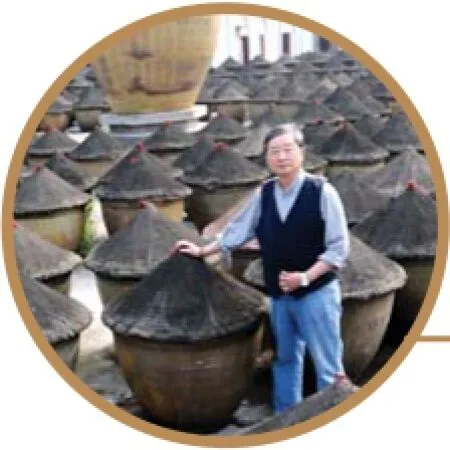
The 1,000-m2exhibition hall displays more than 1,000 hot pot wares and relevant collections. Visitors may fi nd more than 600 pieces of hot pot wares in all ages, ranging from singleperson hot pot ware dating back to the slave society in the Western Zhou Dynasty to all-silver hot pot ware appointed by Emperor Qianlong to organize “the Banquet for the Elderly”. When distinguished by texture, there are pottery, porcelain,stone, silver, tin, copper (bronze, cupronickel, red copper and brass), aluminum, iron, stainless steel, purple sands and enamel hot pot wares, and the fuels of such hot pot wares include charcoal, candle, alcohol, gas and electricity. And to everyone's amazement, there is even hot pot ware that applies animal and vegetable oil as its fuel. Besides, the truly exquisite antiques consist of bronze tripod of the Western Zhou Dynasty, dragon-handle iron tripod of the Han Dynasty,tri-colored glazed pottery hot pot ware of the Tang Dynasty,melon-petal beast-ear cast copper hot pot of the Song Dynasty,four "Shou" characters hot pot ware of the Ming Dynasty, blue glaze dragon-pattern hot pot ware during the reign of Emperor Qianlong in the Qing Dynasty and the all-silver hot pot ware appointed by Emperor Qianlong to organize “the Banquet for the Elderly”. The complete range and rich variety of collections in this museum are incomparable in the whole world.

In addition to collecting, Nie is also interested in making “No.1s”. The world's biggest hot pot table standing in the center of Saner Group's gate is a vivid example of Nie's originality. Nie built this giant table in the production base to gather friends who share mutual enthusiasm for hot pot culture. The giant table is surrounded by six large pillars carved with couplets about Chongqing's hot pot culture. In addition to the worldfamous Chongqing hot pot, the guests can fully appreciate the brilliant hot pot culture as they are dinning in the restaurant.

Nie said: “I am not a collector who hides the treasures in the cellar and sell them to others when they are appreciated. The collections in my museum will go nowhere else and they are all of permanent values. I have never donated money — the museum I built is the best charity. It is for our next generation and the society.”
The eyes of architecture -The Museum of lnscribed Boards
In Chongqing, there is a museum of inscribed boards called Hanbian Park, which is home to more than 3,000 ancient inscribed boards. It is hard to imagine that Chongqing has such a place if you have never been there yourself. Located beside the gas station on Niudi Road, Liziba, Yuzhong District,Chongqing, the museum sits against a big mountain with its face towards Jialing River.
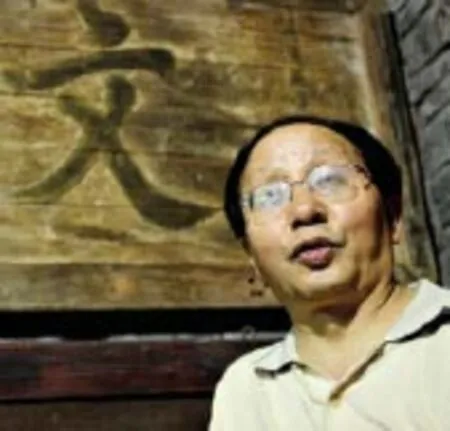
It takes Liu Guangrui and his father Liu Shaolin almost 20 years to collect these inscribed boards. Liu Guangrui is neither an archaeologist nor a cultural relic dealer; instead, he is a doctor. In his spare time, he has traveled all across Sichuan and Chongqing and even left his footprints in Inner Mongolia,Fujian, Guangdong, Yunnan and many other provinces in China. Even his bicycle, which he rode in his journey, got broken for several times. Eventually, his persistence and efforts are well paid off — he gets a collection of boards through years of searching, which are quite infl uential in Chongqing and other places in China.
Some boards are simple and plain with nothing but inscriptions on them; some are covered with exquisite carvings;some have wormholes all over their bodies. You can see axe wounds on certain boards, which are used as bread boards for feasts. Some boards are used for door frames and fl oors and some are even placed in pigsties. The oldest board dates back to the Ming Dynasty and the biggest one is more than 3-meter long.

As a symbol of ethic culture, inscribed boards were widely used in both urban and rural areas. Due to historical changes and many other reasons, they became the first antiques suffering from damage since they were hanging out in the open. As a result, you can barely see old inscribed boards in cities now.
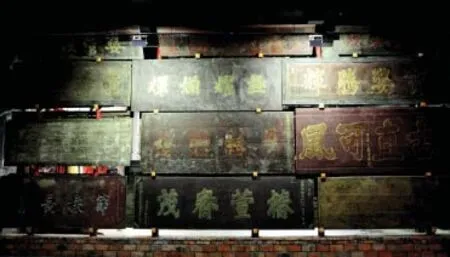
Liu said that as the stone abutments sitting at the entrance of the museum is excavated from a graveyard, it is not actually appropriate to expose it to the outside world. But he did it for a good reason. “It's my way of telling the Chinese people that they are digging their own graves if they fail to protect or even discard traditional Chinese culture,” said Liu.
There are a great number of inscribed boards left by the long process of history, but many of them have been damaged or destroyed. Without any government fund, Liu invested RMB 12 million to build “Hanbian Park”. Ancient architecture expert Mr. Luo Zhewen and cultural relics expert from The Place Museum Mr. Yang Boda said as they were visiting over 300 ancient Chongqing inscribed boards: “Chongqing's culture and history are preserved in these inscribed boards and they are cultural inheritance of great value.” After visiting this museum,the Taofen Award winner and news expert from Shanghai Mr. Zhang Gongfei wrote as follows: “They are all about culture and history — if you really understand them.” He was also amazed by the brilliant history and culture of Chongqing.
Lifetime companion -Ancient Lantern Museum
In Chongqing, a man called Wu Shiyou, in over a decade,has collected more than 500 lanterns. The small lampstand has sparkled Wu's infi nite imagination. He often says that these lamps are actually a kind of medium — as you light them up, it's like you are talking to the ancient people.
When Wu was young, he determined to go to a college of fi ne arts and be an artist. He, however, ended up in a medical college and started his career as a doctor. His childhood experience of learning arts gives him excellent art appreciation ability and he is exceptionally fascinated about Chinese folk culture.
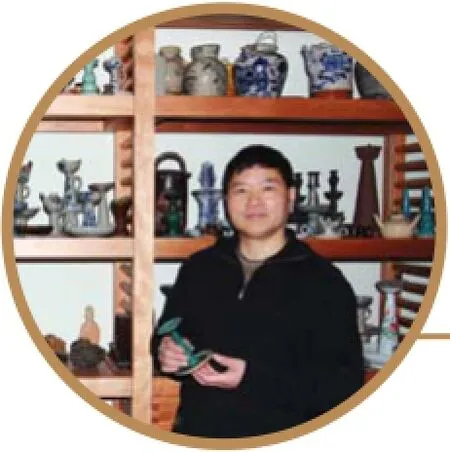
As a doctor, Wu has encountered many patients and many of them are from distant rural regions. To show their gratitude for Wu, they would ask for information about lanterns in distant regions, and Wu thus has more access to lantern collections. As a result, Wu has scored many lampstands that are scattered all around China. Thanks to his unremitting efforts, he has gotten himself plenty of ancient lanterns from his journeys all around the country and his house is also filled with these lanterns.
Wu said that he got his wide collection of lanterns by luck and he believes that they are meant for him to find. As the saying goes, “Sometimes, it's effortless to get a treasure”. Once, he went to Rongchang and a friend of his showed him a quite strange lantern — looking quite unusual like a helmet,it turns out be a delicately-designed “patrolling lantern” with complete functions. The lantern is designed with wind-proof,rain-proof and smog-proof functions. Wu was so fond of the lantern that the owner gave it to him as a present. According to textual research, it is an ancient lantern of the Song Dynasty.

Wu's luck has brought him a variety of collection: a grey pottery lantern of the Han Dynasty — a grant for some other things bought in Chengdu; two different bamboo lampstands — a honorarium given by a patient from Daba Mountain; a brass “mosquito-killer lantern” with complete functions — a commodity bought when he was studying in Beijing.
Over two decades, Wu has collected more than 500 different ancient lanterns. The prices of certain lanterns have increased by almost 1,000 times, but Wu has never sold any one of them. He collects lanterns just because he loves them. “While it may seem accidental, I actually have deep emotions for lanterns, which is way I started to collect them in the first place. When I was young, my family would light up oil lamps;in the country life, you hold a torch when you go outside and you light up a lamp when you come home. With the dim lantern light, I prepared for the college entrance exam. For me, lanterns are my lifetime companions.”
Relics of Celebrities -Flying Tigers Exhibition
Walking up the New Jialing Road in Liziba, Yuzhong District, you can see an old house with green tiles among trees and grass — the famous “Flying Tigers Exhibition”.
The friendly curator Dai Qingbiao opened this exhibition building out of his obsession with the Flying Tigers. As one of the few Flying Tigers exhibition buildings in China, it carefully preserves the objects once used by the members of Flying Tigers and it has witnessed the profound friendship Chinese and Americans established during their united war against Japan.

Curator Dai has been studying the Flying Tigers for a decade and he is more than pleased to share with others everything he knows about it. Although opening this exhibition building by accident, he now considers it a responsibility to keep it in good operation. To him, it is an up-most honor to have the opportunity to keep this valuable history for Chongqing people.

When talking about the Flying Tigers, its founder Claire Lee Chennault is a name we can never miss. Curator Dai holds enormous admiration for this American. “Claire Lee Chennault is the key fi gure in the Flying Tigers; without him, it could have never existed, ”said Dai. On the wall of the exhibition hall hangs a giant photo. You can see the charm of a soldier in the old faded black and white photo — the spirit and vigor are still written all over that handsome face. “He (Claire Lee Chennault)came to China in 1937 to inspect the air force and was appointed the consultant. He modifi ed the training procedures and taught new pilots new tactics. He also built a giant radio and telephone network able to foresee the coming of Japanese bombers. It greatly facilitated the combat and reduced possible harm for innocent people,” said Dai.
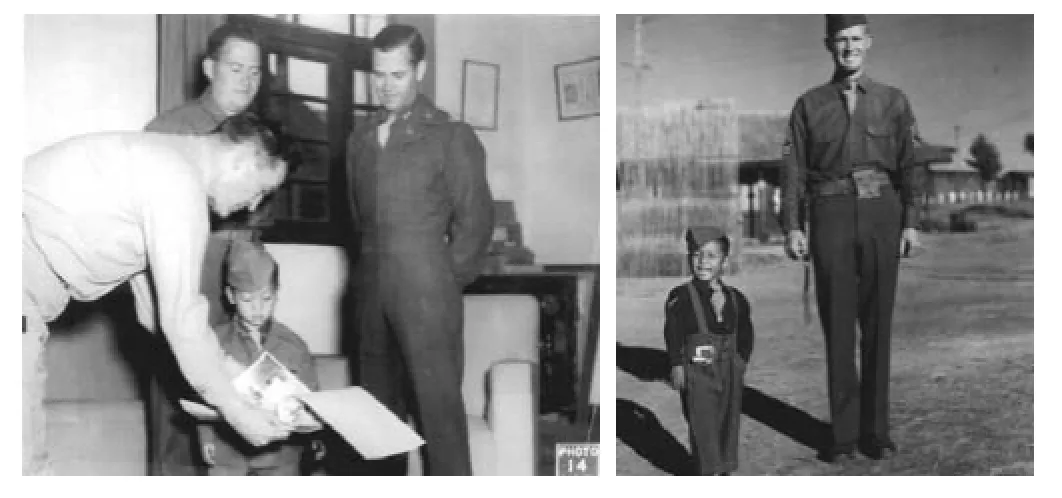
During the War of Chinese People's Resistance against Japanese Aggression, Chongqing was a barren and underdeveloped land. The houses were torn down by the Japanese army and Chongqing people suffered a lot in this war-beaten land. Now, the war and the smokes of gunpowder are long gone. Chongqing miraculously survived the relentless bombing of Japanese army and has grown into a metropolis with a couple million populations. And this makes every Chongqing people proud. As a city written with glory and legend, Chongqing has made remarkable contributions to making peace. And the story of the Flying Tigers is the best witness of its brilliant history..
A MAP OF PRIVATE MUSEUMS IN CHONGQING
□ Written by Zou Yingqiu
